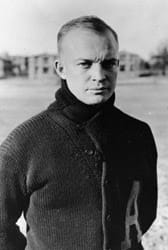The greatest act of project management

One of the few hobbies I have is collecting toy soldiers and learning about the military history surrounding those soldiers. This is an important anniversary because it is the 71st anniversary of D-Day and the 70th anniversary of VE-Day. I am afraid that we can learn a great deal from this period of history, from the arrogance of Hermann Goering to the quiet leadership of Omar Bradley. This week, I want to discuss the greatest piece of project management ever accomplished, the invasions of Normandy, and what people in the Agile community can learn from it.
Looking back, the Second World War was the most enormous catastrophe to occur in Western civilization. Over seventy million people died in the conflict, and it spawned suicide attacks, the deliberate targeting of civilians, and nuclear weapons. It was the product of economic collapse and punitive treaties. Its aftermath is still with us today.
Dwight David Eisenhower was a mid-level officer at the start of World War Two, holding the rank of Colonel at the beginning of 1941. He had a reputation as a good politician and staff officer for more senior commanders, including Douglas MacArthur. From the outside looking in, Eisenhower was condemned to be a mid-level functionary with a minor role in the war. What changed was that General George Marshal, the top military officer during the Second World War, noticed that Eisenhower, or Ike as he was nicknamed, had a knack for getting people to work together without having to give orders or invoke rank. In 1942, he spent most of his time coordinating efforts between the British, the Free French, and other allies in London. His reward for his efforts was command of the Allied Forces in North Africa, fighting Rommel and the Afrika Corps.
The lessons learned in North Africa and Ike’s efforts to get highly competitive commanders like Patton and Montgomery to work together sealed his fate. In 1943, he was appointed to command the Allied Expeditionary forces in Europe. For good or ill, Eisenhower would be in charge of the planning and execution of the invasion of France to create a second front against Nazi Germany. The planning included everything from deploying airborne troops to getting millions of gallons of fuel across the English Channel. It had to be conducted with complete secrecy because if the Germans found out, they would roll the invading army back into the sea. It involved schmoozing Winston Churchill over cigars and brandy. It meant appointing Omar Bradley over Patton because he was a more level-headed commander. It also meant putting up with Charles de Gaulle, who called the entire exercise folly when notified of the plan.
The invasion of D-Day was rehearsed twice and conducted in secret. The launch of the invasion was even delayed, thanks to bad weather. Despite all the planning, late nights, and countless packs of cigarettes that Eisenhower smoked, there was little to guarantee the operation's success. When the word was given, 5,000 ships and over 150,000 people took action. Americans, British, Canadians, Free French, and numerous allies stormed the beach on June 6th. Eisenhower said that once he had given the orders to launch the invasion, everything was out of his hands, and he had to let the troops do their jobs.
I have a tremendous amount of respect for Eisenhower, the General. He could sweat the small stuff while not losing sight of the big picture. He was able to deal with difficult and insubordinate people and get them to do a job. He was willing to take responsibility for failure as well as success. He respected the people who served under him and never considered a soldier expendable. Finally, he was able to relate to people higher up the chain of command and have them understand how he was going to accomplish the mission. A competent scrum master should possess all of these skills.
Eisenhower’s story should also illustrate how even a mid-level manager or leader can be thrust into a position of severe visibility. They will have to succeed when the stakes are high. I keep thinking about that when I grumble that I have a desk in the office about the size of a desk blotter. Someday, I am going to have to step up, and I damn well better be ready for the opportunity.
So this week, I decided to give you a history lesson about Eisenhower and relate it to being a scrum master. The success of the Normandy invasions is not solely because of his leadership. Countless troops and support people contributed to the success, but Eisenhower knew the ultimate success or failure of the operation would be pinned on him. It sounds just like what it means to be a scrum master. So when the pressure gets you down, and it seems like you will not be able to succeed, think about Ike and his lonely moments in the spring of 1944 when the lives of hundreds of thousands of people depended on him. He was able to rise above himself, and so will you.
Until next time.




Comments ()